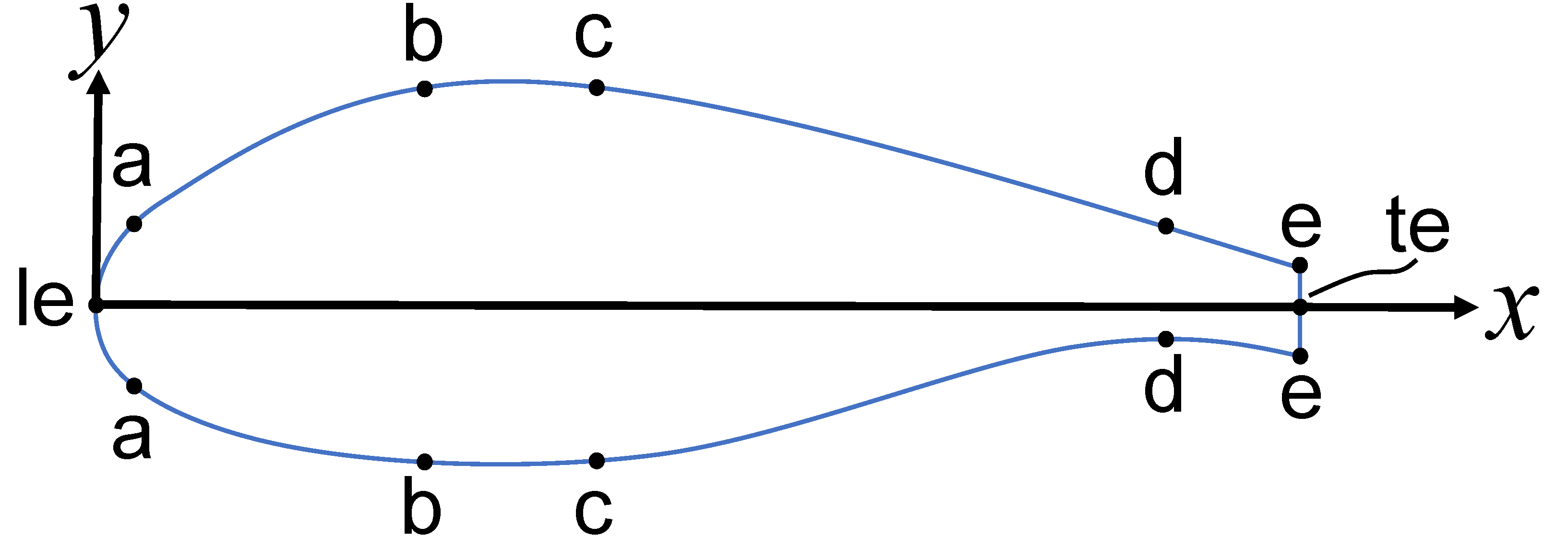Blade Definition
In NuMAD, a blade is uniquely defined with the BladeDef object, or blade
object for short. As defined in source\numadObjects\BladeDef.m, many of the properties are parameterized by spanwise location. Refer to
Blade Class for a complete listing of BladeDef properties.
First and foremost there are stations. A station is an airfoil at a
specified span location. The airfoil is partitioned by keypoints,
shown in Fig. 1. Various blade properties such as blade.leband,
blade.teband, blade.sparcapwidth, and blade.sparcapoffset help to
position the keypoints precisely. For example, blade.leband is the
arclength from the le keypoint to the keypoint a. Regions are
defined between the keypoints as listed in Table 2. An adjacent
station helps define these regions as areas. Spanwise lines emanating
from each keypoint are connected to the corresponding keypoints on an
adjacent station; thus bounding the region with four curves. A suffix of
either HP or LP is added to each region name to distinguish regions on
the high pressure surface verses the low pressure surface. Other airfoil
properties and external blade shape data are defined with the AirfoilDef
class and the StationDef object respectively.
Usually, the number of stations defined needs to be supplemented for
with interpolated stations.
Material properties, layup information, and thicknesses and widths are
additionally defined in the MaterialDef, StackDef, and ComponentDef respectively.
Refer to the Object Classes, Properties, and Methods for more information.

Fig. 1 Relative locations of the blade keypoints.
Region Name |
Bounding Keypoints |
|---|---|
LE |
le & a |
LE Panel |
a & b |
Spar |
b & c |
TE Panel |
c & d |
TE REINF |
d & e |
TE Flatback |
e & te |
Terminology
Term or Variable |
Definition |
|---|---|
HP |
High Pressure |
LE |
Leading Edge |
LP |
Low Pressure |
TE |
Trailing Edge |